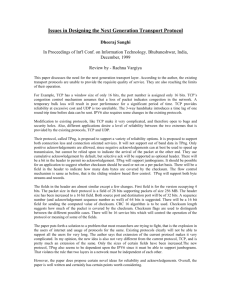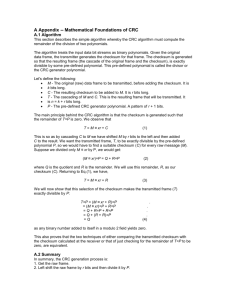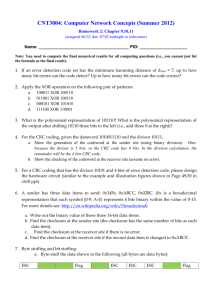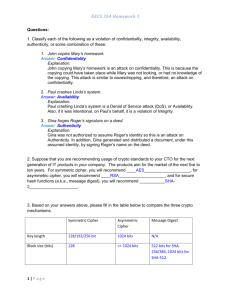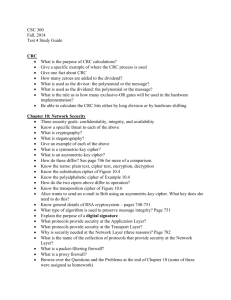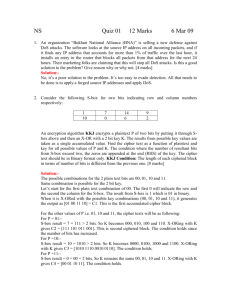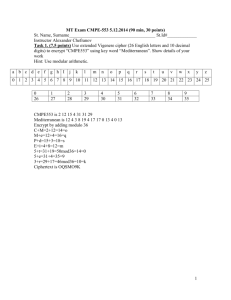BSc IT 4th Semester (Sessional (Minor II) Examination, May 2014
advertisement
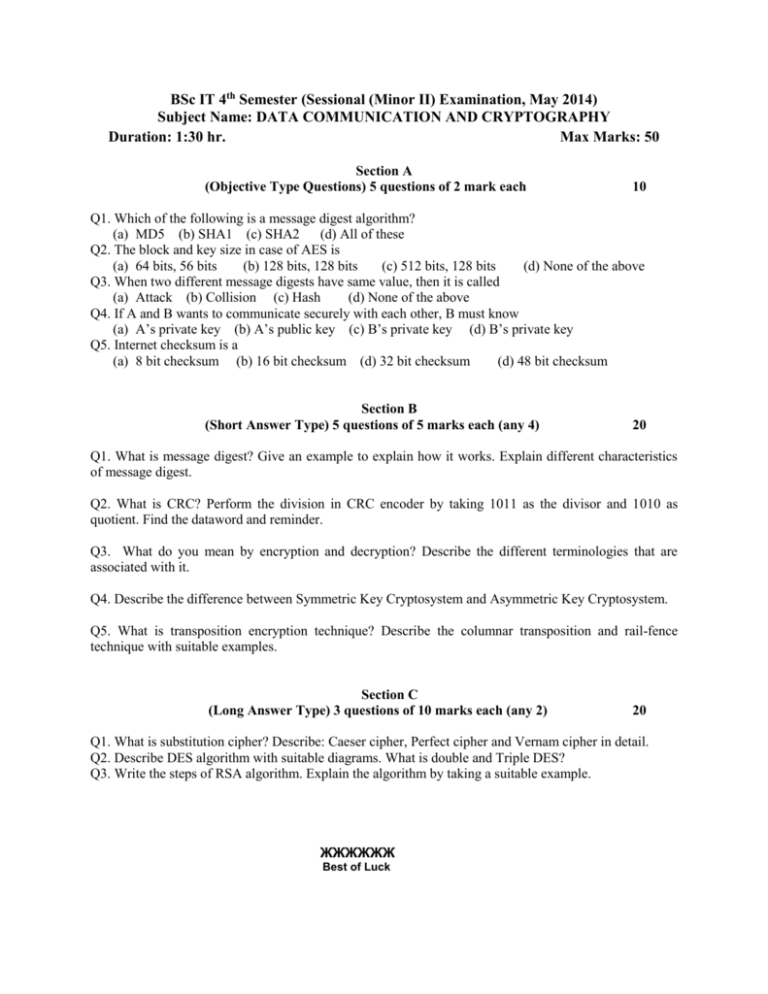
BSc IT 4th Semester (Sessional (Minor II) Examination, May 2014) Subject Name: DATA COMMUNICATION AND CRYPTOGRAPHY Duration: 1:30 hr. Max Marks: 50 Section A (Objective Type Questions) 5 questions of 2 mark each 10 Q1. Which of the following is a message digest algorithm? (a) MD5 (b) SHA1 (c) SHA2 (d) All of these Q2. The block and key size in case of AES is (a) 64 bits, 56 bits (b) 128 bits, 128 bits (c) 512 bits, 128 bits (d) None of the above Q3. When two different message digests have same value, then it is called (a) Attack (b) Collision (c) Hash (d) None of the above Q4. If A and B wants to communicate securely with each other, B must know (a) A’s private key (b) A’s public key (c) B’s private key (d) B’s private key Q5. Internet checksum is a (a) 8 bit checksum (b) 16 bit checksum (d) 32 bit checksum (d) 48 bit checksum Section B (Short Answer Type) 5 questions of 5 marks each (any 4) 20 Q1. What is message digest? Give an example to explain how it works. Explain different characteristics of message digest. Q2. What is CRC? Perform the division in CRC encoder by taking 1011 as the divisor and 1010 as quotient. Find the dataword and reminder. Q3. What do you mean by encryption and decryption? Describe the different terminologies that are associated with it. Q4. Describe the difference between Symmetric Key Cryptosystem and Asymmetric Key Cryptosystem. Q5. What is transposition encryption technique? Describe the columnar transposition and rail-fence technique with suitable examples. Section C (Long Answer Type) 3 questions of 10 marks each (any 2) 20 Q1. What is substitution cipher? Describe: Caeser cipher, Perfect cipher and Vernam cipher in detail. Q2. Describe DES algorithm with suitable diagrams. What is double and Triple DES? Q3. Write the steps of RSA algorithm. Explain the algorithm by taking a suitable example. ЖЖЖЖЖЖ Best of Luck
